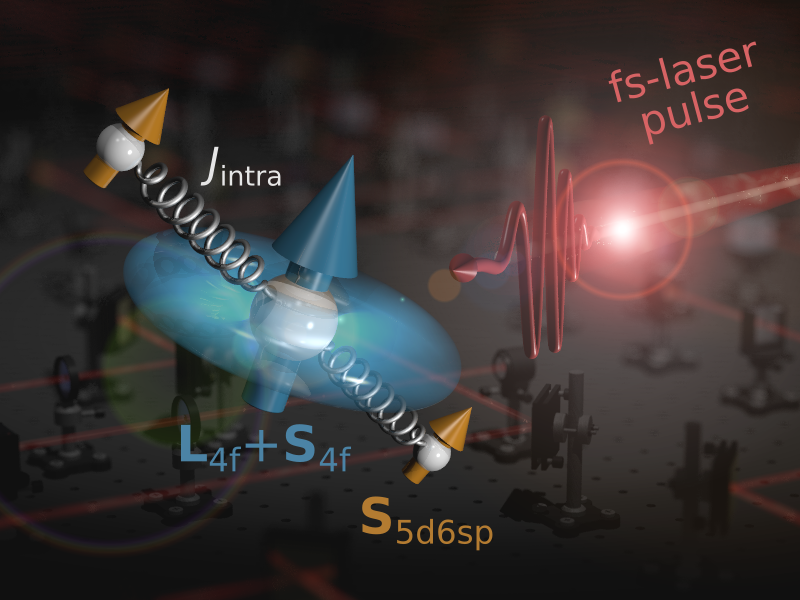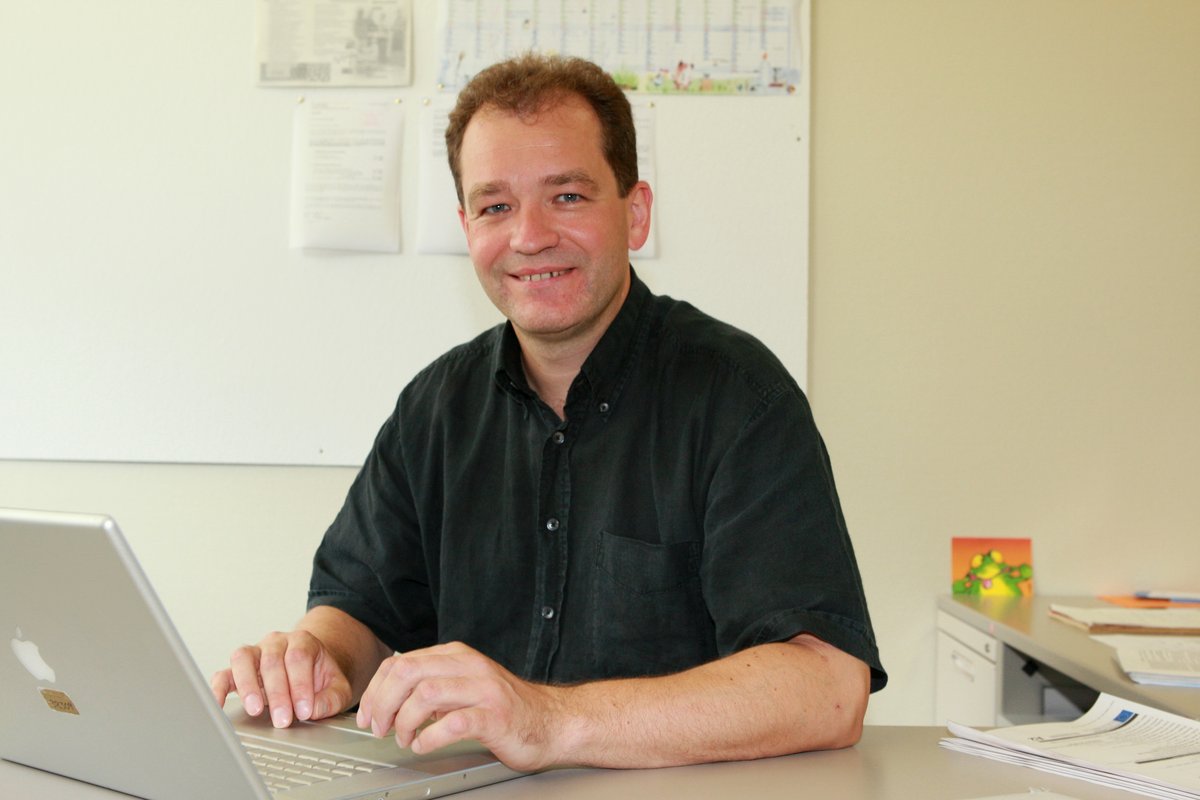
Revolutionizing the cloud
Research cooperation with Konstanz examines the magnetization dynamic of rare earths with regard to their suitability for use in ultrafast data storage
Researchers from the Freie Universität Berlin and universities in Prague, Uppsala and Konstanz contribute to basic understanding of the magnetization dynamic of a material with the high magnetic anisotropy that is decisive for digital data storage. Along with physicist Professor Ulrich Nowak from the University of Konstanz, the research team used elaborate experiments and computer simulations to compare the rare earths gadolinium (Gd) and terbium (Tb). They were able to uncover a new mechanism that causes demagnetization within a picosecond and could be used to switch a bit. This is a thousand times faster than current hard drives. The results were published in the journal Science Advances.
The rare earth metals are not actually as “rare” as the name would suggest, and they have very special properties. For example, mixing rare earths in an alloy with iron and cobalt makes it possible to switch this metal’s magnetization using a single laser pulse. This all-optical switching process is especially relevant for the mass storage of data because it holds the potential for switching that is one thousand times faster than conventional magnetic cloud storage and, thus, could revolutionize today’s magnetic cloud technology. This novel process is driven by the high anisotropy that causes the magnetization to align strictly perpendicular to the magnetic film (in accordance with the binary system of digital storage). This is the indication of the strong connection between lattice, orbital moment and spin.
The rare earths Gd and Tb
Materials with a very high magnetic anisotropy are already used to stabilize bits on magnetic hard drives with increasing storage density. A technique known as HAMR will be used in the future to switch these bits. In Heat-Assisted Magnetic Recording, material is heated locally using a laser pulse in order to switch a bit in an applied magnetic field.
The researchers focused their efforts on the rare earths Gd and Tb. In these magnetic materials the magnetic order is sustained by the 4f electrons, which are strongly bound to the atomic nucleus. Their exchange interaction leads to alignment. Gd has seven and TB has eight 4f electrons. The researchers proved that the number of 4f electrons is the key to the different behaviour of the two materials: Gd shows hardly any magnetic anisotropy, while it is extremely strong in Tb.
An especially strong interaction of the magnetic momentums with the crystal lattice
The preferred orientation of magnetization along a crystal axis in the Tb rare earth is the result of an especially strong interaction of the magnetic momentums with the crystal lattice. If a laser is used to excite the crystal, the 4f magnetic momentums react particularly strongly to the hot lattice. The connection between the lattice and the spin system is so strong that, after the laser excitation, the magnetization breaks down within a few picoseconds (one billionth of a second). The rare earth Gd has a much weaker interaction, which is hy it shows a much lower anisotropy. Thus, the material determines how well the HAMR technique works.
Facts:
- Original publication: B. Frietsch, A. Donges, R. Carley, M. Teichmann, J. Bowlan, K. Döbrich, K. Carva, D. Legut, P. M. Oppeneer, U. Nowak, M. Weinelt, The role of ultrafast magnon generation in the magnetization dynamics of rare-earth metals. Science Advances 6, eabb1601 (2020). DOI: https://doi.org/10.1126/sciadv.abb1601
- Investigation of the magnetization dynamic of rare earths with regard to their suitability for use in ultrafast data storage
- Research collaboration of the Freie Universität Berlin with universities in Prague, Uppsala and Konstanz
- Participation by Professor Ulrich Nowak, leader of the research unit “Magnetic Materials” at the University of Konstanz.

